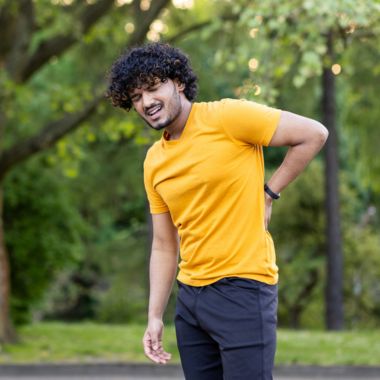5 Swimming Exercises to Help SI Joint Pain
If you’re one of the many people who suffer from sacroiliac (SI) joint pain, you know how debilitating it can be. Everyday activities like walking, standing, and even sitting can be painful and uncomfortable. Fortunately, there are a variety of activities you can try to improve your quality of life and temporarily relieve your pain. One of the most popular activities that may alleviate SI joint pain is swimming.
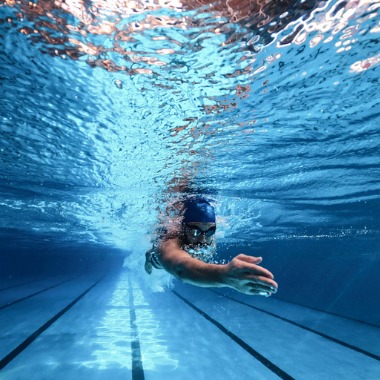
What is SI Joint Pain?
The SI joints are located at the base of the spine, where the spinal column connects to the pelvis. These two joints are responsible for stability and shock absorption, helping to transmit movement and weight from the upper body to the lower body. SI joint pain can be caused by several different factors, including:
- Injury
- Prior back surgery
- Arthritis
- Pregnancy
- Uneven gait
- Infection
- Obesity
Benefits of Swimming Exercises to Help SI Joint Pain
When living with SI joint pain, it’s important to perform exercises and activities that won’t further exacerbate your pain. Often, high-impact activities like running, playing tennis, or anything that involves excess force on your joints on an unforgiving surface are not optimal for people with SI joint pain.
Instead, try low-impact exercises, such as:
- Yoga
- Stretching
- Walking
- Cycling
- Swimming
One of the best low-impact activities is swimming, which is a non-weight-bearing, full-body exercise that can improve your endurance, enhance your cardiovascular health, and allow you to maintain a healthy weight. While swimming, the water supports the body and takes the weight off the joints, which can help reduce pain and inflammation associated with sacroiliitis. Swimming also helps to strengthen the muscles around the SI joint, which can further promote stabilization in the joint and reduce pain.
5 Swimming Exercises for SI Joint Pain
Here are five swimming exercises that may help relieve SI joint pain:
1. Freestyle
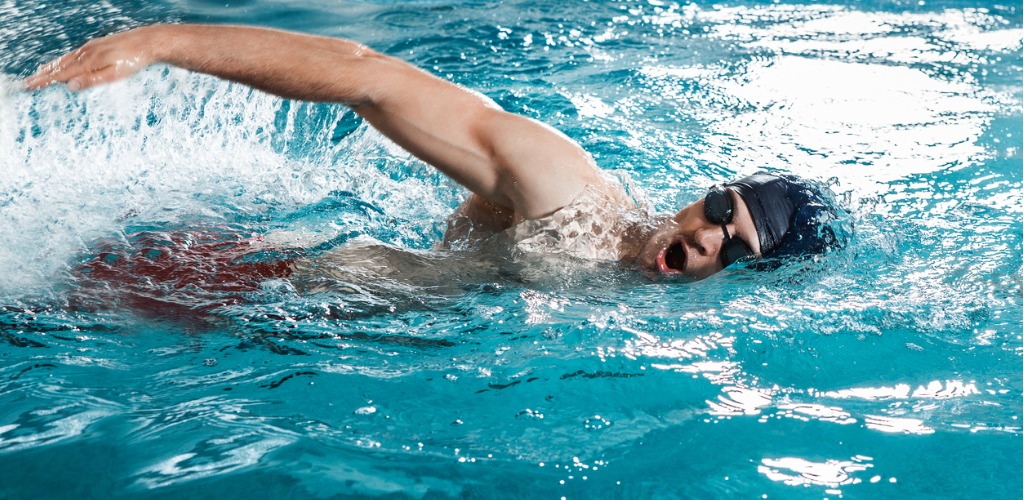
Also called the front crawl, freestyle is one of the simplest and fastest swimming strokes. To swim freestyle:
- Start on your stomach and put your right hand in the water at least a foot above your head. You should angle your hand so your thumb and index finger can enter the water first.
- Once your right hand is in the water, spread your fingers wide as possible and push the water behind you.
- As your right hand has entered the water, lift your left arm and repeat the motion.
- When your arms cycle, kick each foot with each arm stroke.
- Rotate your body with your alternating arm strokes to allow yourself to breathe.
2. Backstroke
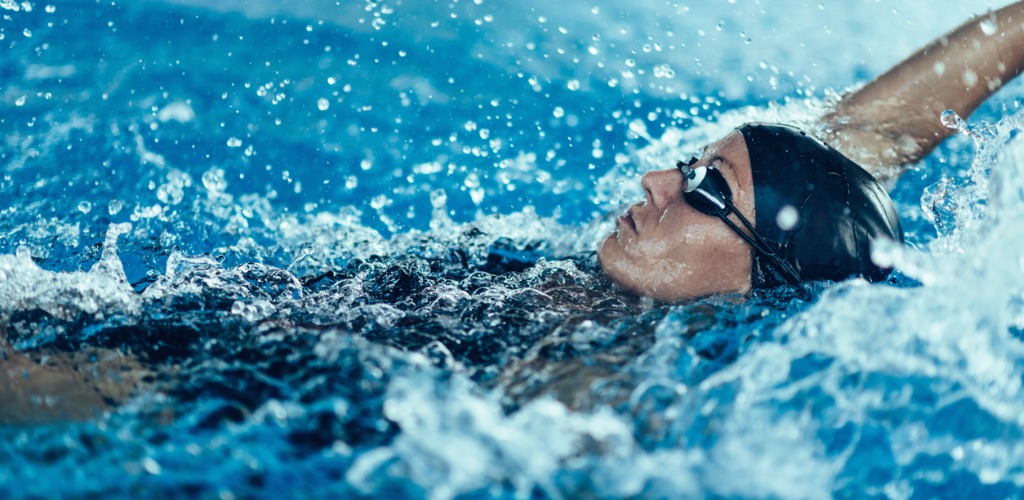
To perform the backstroke:
- Start by floating on your back in the water. Keep your back straight and as flat on the water’s surface as possible.
- Begin kicking your legs in short, quick motions. They should be straight, close together, and aligned with your hips.
- As you kick your legs, bring your right arm up, aiming it towards the sky or ceiling. Bring your arm over your head in a circular motion, landing it down into the water.
- After your right arm hits the water, push it forward and downward with your right hand, keeping it close to the water’s surface to propel yourself forward.
- Once your right arm enters the water, repeat this motion with your left arm, keeping a steady rhythm between your arms and legs.
- Remember to keep your shoulders and hips rotating to maintain fluidity and flexibility.
3. Breaststroke
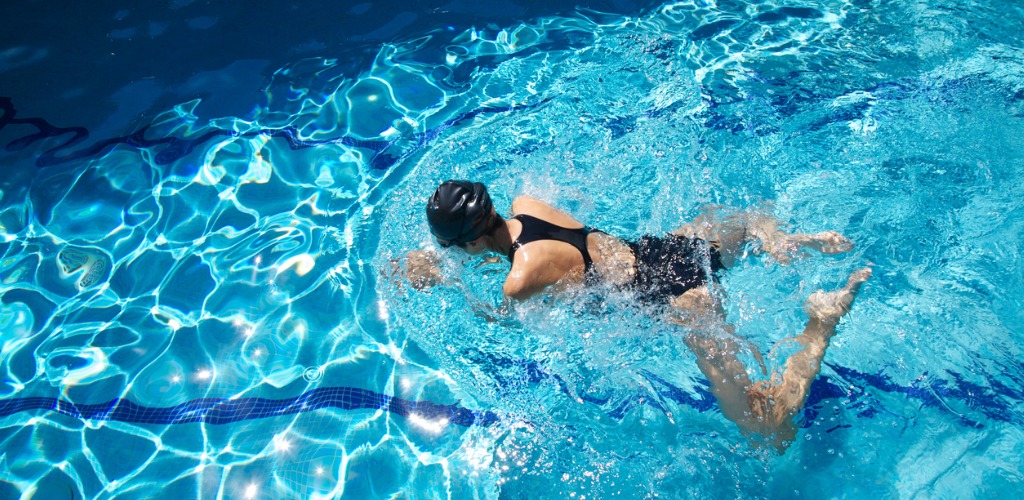
Breaststroke is another beneficial swimming exercise to help SI joint pain. This low-impact, simple stroke does not require you to raise your body out of the water. To complete breaststroke:
- Start by lying on your stomach.
- Reach your arms above your head until they are completely straight, then turn both palms outward, pushing your hands out and down in a circular motion.
- Once your arms have reached a “Y” position, bend your elbows and bring your hands towards your chest.
- Push the arms straight out and repeat.
- While moving the arms, bring your heels towards your butt while bending your ankles towards your shins.
- From there, kick your legs back in a circular motion until they are extended straight behind you.
4. Kickboard Kicks
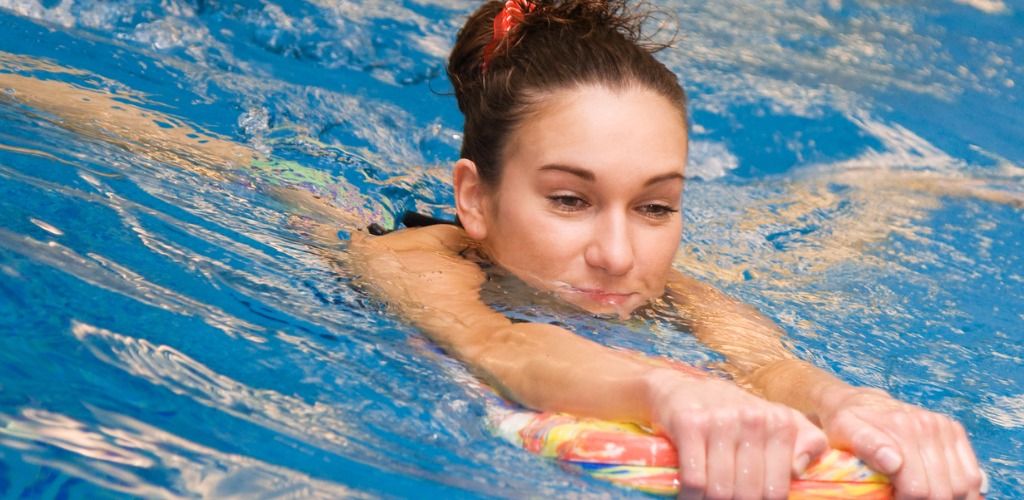
Breastroke is another beneficial swimming exercise to help SI joint pain. This low-impact, simple stroke does not require you to raise your body out of the water. To complete breaststroke:
- Start by lying on your stomach.
- Reach your arms above your head until they are completely straight, then turn both palms outward, pushing your hands out and down in a circular motion.
- Once your arms have reached a “Y” position, bend your elbows and bring your hands towards your chest.
- Push the arms straight out and repeat.
- While moving the arms, bring your heels towards your butt while bending your ankles towards your shins.
- From there, kick your legs back in a circular motion until they are extended straight behind you.
5. Water Jogging
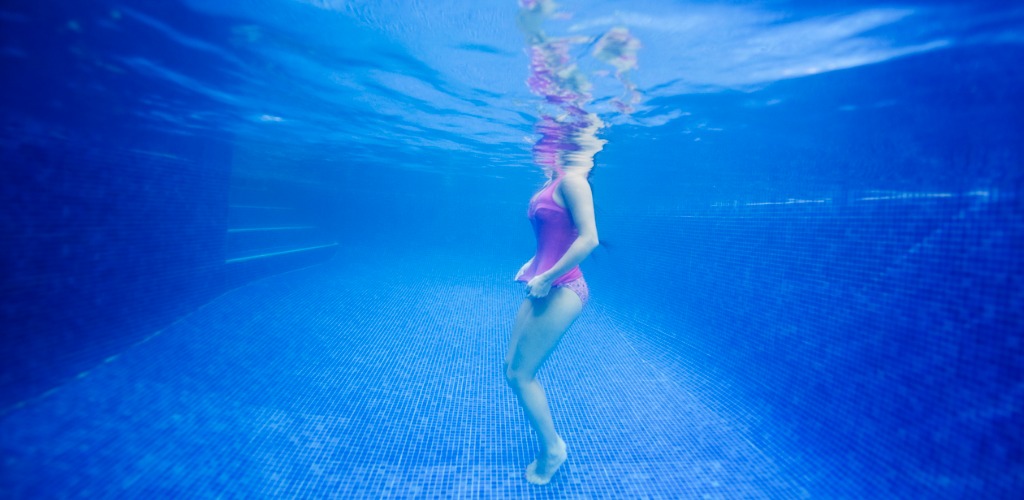
Often used for rehabilitating runners, water jogging is a productive, low-impact cardiovascular exercise. This activity mimics your natural running form but takes place in the deep end of the pool using a flotation device. The flotation device allows your body to be suspended and move freely while keeping your head above the water’s surface.
Although swimming can be highly beneficial for those with SI joint pain, remember to avoid any movements that involve forceful arching of the back, like the butterfly stroke.
Treat Your SI Joint Pain With PainTEQ
If you’re experiencing SI joint pain, swimming may be a good option for temporary pain relief. However, if your SI joint pain persists despite these strengthening, low-impact exercises, it may be time to seek further help. Talk to your doctor about the LinQ SI Joint Stabilization System, a minimally invasive treatment option designed by PainTEQ to help relieve SI joint pain. Click here to learn more about this innovative treatment today.



